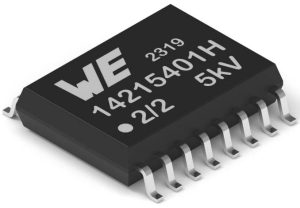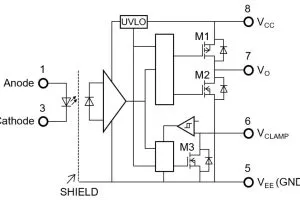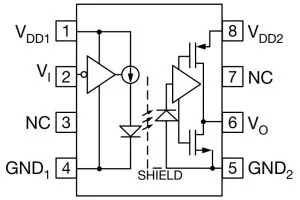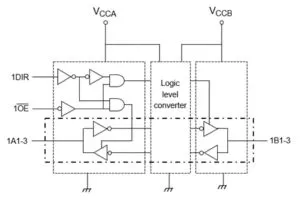
Devices in the WPME-CDIP family have four 100Mbit/s isolated channels and a built-in dc-dc converter that provides isolated power from one side to the other.
Different versions have different combinations of digital isolator directions: all from input to output, three in that direction and one returning, or two in each direction.
A pin selects 3.3 or 5V power at the output (up to 650mW). Isolation is up to 5kVrms, and conducted and radiated EMI is compliant with EN55032 Class B / CISPR-32.
The same pin determines output logic levels on the isolated side.
Packaging is 10.3 x 7.5 x 2.5mm SOIC-16.
Devices in the WPME-CDIS are similar, but require power on both sides of the barrier as there is no internal dc-dc converter.
In this case, data rates up to 150Mbit/s are supported.
Packaging is the same 10.3 x 7.5 x 2.5 mm SOIC-16WB with 5kVrms of isolation, but there are also two-channel models in 4.9 x 3.9 x 1.5mm SOIC-8NB packaging with 3.75kVrms isolation.
Within both families, variants are available that default to logic-high on the isolated side if there is no connection to the input side, and other variants that default to logic-low.
Operation is across -40 to +125°C, although dc-dc converter-inclusive versions cannot deliver full power above 85°C.
“Digital isolators are the perfect solution if fast and robust signal isolation is called for,” according to Wurth. “The isolators feature high immunity to system noise with CMTI [common mode transient immunity] of ±150kV/µs.”
It foresees use in communication buses, switch-mode power supplies, motor controllers, testing systems, measuring systems, battery management and photovoltaic inverters.
Product pages:
 Electronics Weekly
Electronics Weekly



